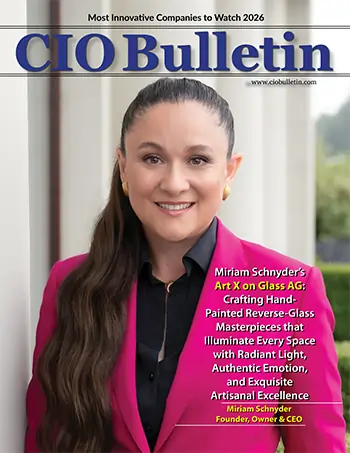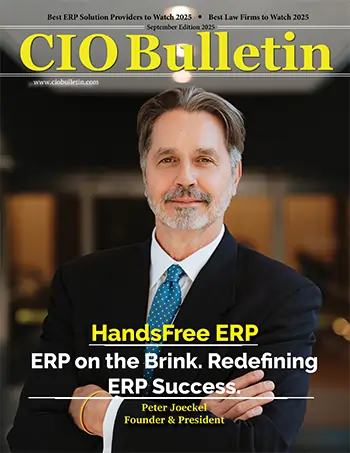Home Industry Retail Why Experience-Driven Products...
Retail
.webp)
CIO Bulletin
20 June, 2025
In today's highly competitive and rapidly evolving marketplace, innovation is no longer defined merely by technological advancement or product functionality. Instead, it's being led by a more nuanced, human-centric factor: experience. Experience-driven products—those designed around user needs, emotional engagement, and lifestyle integration—are now at the forefront of innovation across industries.
This shift represents a fundamental change in how companies conceptualize, develop, and market their offerings. Whether it's in the tech world, consumer goods, or even niche lifestyle sectors, products that deliver exceptional, personalized, and memorable experiences are setting the pace. Here's why.
It wasn't long ago that superior features or cutting-edge design were enough to dominate a market. Today, consumers expect more. They want seamless usability, emotional connection, and relevance to their individual lives.
Apple, for example, didn't become a global giant just because of the specifications of its devices. It succeeded by creating a cohesive, pleasurable experience across hardware, software, and retail environments. From unboxing to ecosystem integration, every step is meticulously crafted to deliver satisfaction and delight.
This principle now extends far beyond tech. In fashion, food, beauty, and even vaping, brands that center the user experience are pulling ahead. They offer not just products, but lifestyle enhancements.
Experience-driven products engage users on an emotional level, and that emotional connection drives brand loyalty. Emotional branding—tying a product to a feeling or value—has proven to be far more effective than traditional features-and-benefits messaging.
Think about your favorite coffee shop. You probably go there not just for the quality of the coffee, but because of how it makes you feel—the cozy ambiance, the familiar barista, the smell, the comfort. It's the experience that keeps you coming back.
Emotionally intelligent brands recognize that experiences tend to stick with consumers longer than mere utility. They design interactions that leave lasting impressions. This emotional resonance encourages repeat use, recommendations, and deeper brand affinity.
Another key aspect of experience-led innovation is personalization. Consumers expect products and services that align with their preferences, needs, and identities. Companies that offer customizable options or tailor-made experiences are significantly more likely to win over modern buyers.
For example, the beauty industry has embraced this trend with customizable skincare routines, personalized fragrance profiles, and AI-assisted product recommendations. Similarly, the vaping industry has evolved from one-size-fits-all devices to a diverse, flavor-rich, and user-driven experience.
Take the cherry ice vape as an example. It's not just about nicotine delivery—it's about flavor, refreshment, and lifestyle expression. The cooling cherry burst doesn't simply satisfy a craving; it creates a sensory experience that resonates with a certain mood, season, or personal identity. In this way, even small, niche products are tapping into the power of experiential innovation.
Storytelling plays a crucial role in how people experience a product. Experience-driven brands craft narratives that users can see themselves in. These stories build context, meaning, and aspiration around the product.
The outdoor gear brand Patagonia has mastered this approach. Their products are functional and durable, but it's their commitment to sustainability and environmental activism that turns customers into advocates. The product is part of a story that people want to be a part of.
Incorporating storytelling into the design and marketing of products transforms them from items into experiences. It provides consumers with an emotional hook and a sense of purpose or identity associated with their purchase.
The growing integration of immersive technologies like AR (augmented reality), VR (virtual reality), and AI (artificial intelligence) has elevated experience-driven product development to new heights.
Retailers now use AR to let customers visualize furniture in their homes before purchasing. Beauty apps allow users to try on makeup virtually. These digital experiences are interactive, engaging, and useful—enhancing product discovery and confidence in purchasing decisions.
AI, on the other hand, helps create more adaptive and responsive experiences. From personalized playlists on Spotify to curated shopping feeds on social media, technology is making personalization more dynamic and precise than ever before.
We're living in what economists call the "Experience Economy," where consumers increasingly prioritize experiences over possessions. This is especially true among younger generations, who value what a product allows them to feel, do, or share.
Experience-driven products inherently lend themselves to social sharing. Whether it's the visual appeal of latte art, the unboxing of a limited-edition sneaker, or the taste profile of a unique vape flavor—people share experiences. This gives brands a powerful form of organic marketing: social proof and user-generated content.
Brands that understand the experiential nature of consumption design products that are Instagrammable, TikTokable, or otherwise socially shareable. These shared experiences drive community, virality, and ultimately, growth.
Sustainability is becoming a core element of experience-driven products. Today's consumers don't just care about what a product does—they care about how it's made, the values of the company behind it, and the environmental impact of their choices.
Experience, in this sense, includes the peace of mind and emotional satisfaction that comes with making an ethical decision. Products with sustainable sourcing, eco-friendly packaging, and transparent supply chains add layers of meaning to the user experience, enhancing the overall experience.
Forward-thinking companies are integrating sustainability not just as a feature but as part of the brand's identity and the customer journey. From Patagonia to Tesla, this commitment enhances the product experience and deepens brand trust.
Design thinking, UX (user experience) research, and customer journey mapping are now essential components of product development. These practices shift the focus from what a product can do to how it makes users feel and how it fits into their lives.
Companies that embrace these strategies create products that are intuitive, enjoyable, and sticky. They iterate based on user feedback, test emotionally resonant features, and continuously evolve with the customer. As a result, these businesses not only deliver better products—they become innovation leaders in their space.
The shift to experience-driven products isn't a passing trend—it's the future of innovation. As technology continues to evolve and competition intensifies, the brands that succeed will be those that prioritize human experience above all else.
In a world where attention spans are short and options are limitless, the only way to stand out is to create something that feels meaningful, memorable, and deeply personal. Experience is the new currency of value.
Experience-driven products are redefining what it means to innovate. No longer just about features or price, success now hinges on emotional resonance, personalization, storytelling, and sustainable values. From tech to lifestyle products, companies that lead with experience are not only shaping their industries—they're reshaping consumer expectations as a whole.
To stay competitive, brands must stop asking, "What can we sell?" and start asking, "What experience can we create?" That mindset is what truly drives innovation today.







